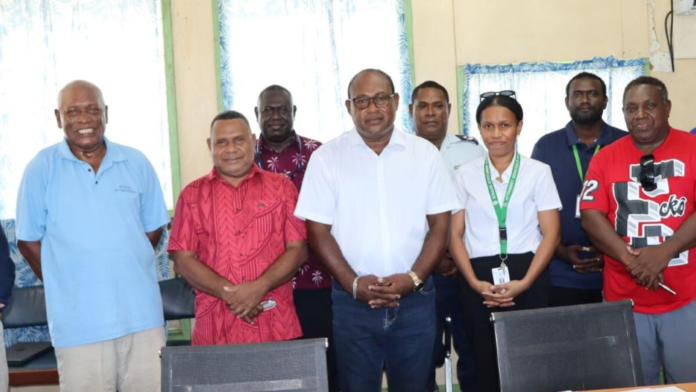

THE Road and Transport Board (RTB) of the Ministry of Infrastructure Development (MID) has commenced its series of critical reform meetings to respond to the changing road and transport systems for improved public road and transport safety across the country.
In its first meeting for this year under the Chairmanship of Permanent Secretary of MID, Allan Lilia, the RTB was tasked with critical reforms needed to accommodate the changing landscape and technological advancements of the country’s road and transport systems.
Opening today’s board meeting, the Minister for Infrastructure Development, Hon. Manasseh Maelanga, welcomed members and encouraged the board to fulfill its mandates.
“It is essential to recognize the unique role this Board plays as a legally established body and our designated highway authority. With authority under the law, the Board has the responsibility to oversee and guide the development of a safe, efficient, and reliable transport system across our nation,” Maelanga said.


“This authority not only allows us to address the critical needs of our highways and road users but also mandates us to shape policies and regulations that ensure the continued safety and functionality of our infrastructure,” Maelanga added.
The board’s crucial role is to assess progress, respond to emerging challenges, and prioritize actions that best serve our communities. One of the main priorities is the timely development and implementation of a Government Vehicle Policy.
“We must advance this policy as soon as possible to ensure that government vehicle usage adheres to high standards of safety, accountability, and efficiency,” Maelanga said.
This policy will provide the necessary framework for managing government vehicles effectively and for setting an example of responsible vehicle use. A draft policy paper will be deliberated on this week.
Another crucial role of the board is to actively engage with the Honiara City Council (HCC) to develop and implement a cohesive policy on large public notices (Billboards) along City highways. Such a policy would not only improve the visual landscape but also enhance safety by ensuring that public notices and signage are properly managed, and well-placed, and contribute positively to the experience of all road users. Collaboration with HCC will be essential to address and enforce regulations around public notices and other aspects of highway management effectively.
Another pressing issue to address is vehicle tints. Tints can serve functional purposes but need clear guidelines to regulate their use, as heavily tinted vehicles pose safety risks by obstructing visibility for both drivers and law enforcement officers.
By working together with relevant stakeholders, the RTB can create guidelines that balance functionality and safety, ensuring that vehicle tints do not compromise the safety of roads.
Board members are prescribe by relevant legislation and comprised of officials from MID, HCC, RSIPF, the Attorney General’s Chambers, OPMC and other relevant stakeholders.








































